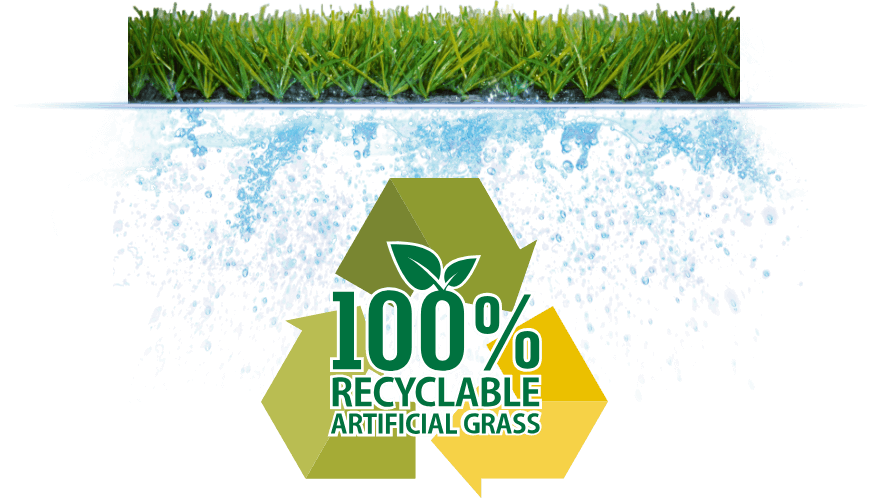Is artificial grass Eco-Friendly?
- 06/03/2020
In this article, we want to show you how Eco-friendly artificial grass really is. We’ll start with the water usage.
Water usage
As we all know, real grass needs water, in fact, it needs a lot of water – especially during summer season. Artificial grass on the other hand doesn’t, unless you want to install a water-based hockey pitch. So, you are not only doing something good for the environment, but also saving yourself money by reducing your water bills.

Recycling
One of the main arguments of those against artificial grass is that it’s not recyclable. That is however not true, well, not completely true. We at CCGrass developed the PRT® series which is a 100% recyclable.

Reduced carbon emissions
We at CCGrass take our environmental responsibility very seriously, which is why we take measures beyond just supplying turf. One of CCGrass´s responsibilities is to help ensure a sustainable solar supply chain. In support of this mission, CCGrass has taken proactive steps to promote environmental and social responsibility, within the industry, by installing the biggest power plant in Huaian, China.
Non-toxic grass
Another advantage of artificial grass is that it doesn’t need weed killers, pesticides, fertilizers and herbicides to protect it. The chemicals are not only harmful to humans but also to pets. Furthermore, they could end up in our water supply. Therefore, artificial grass is the much cleaner solution for the environment.

Capturing rainwater
A big benefit with synthetic grass is that it offers terrific drainage even when the weather is wet and wild for a sustained period; in fact, it drains a lot quicker than natural grass. This, in the end, will help to prevent puddles on the surface. Rainwater can also be harvested and reused, which in the end reduces the costs of water bills and contributes towards the environment.

See the similarities
When you look at an image of a natural turf football field’s cross section, you can see how engineered the construction of this is.
There is a minimum rootzone depth of 250mm above the gravel drainage, which consists of a sand/soil organic mix. Then a layer of sand which might have an undersoil heating system installed. Below this, a gravel drainage layer, on top of a geotextile membrane and a drainage pipe.
The only natural and non engineered element is the grass and roots that grow.
Compare this with the construction of a synthetic turf cross section. There are the fibres which are visible above ground as the grass would be. There is then the infill, such as SBR or Sand particles. These can be laid on a shockpad for a permanent shock-absorbing layer. Then there is 
On comparison, the two cross sections are extremely similar in their construction.
To conclude, from less water usage to reduced carbon emissions, there are many ways in which artificial grass proves it’s the Eco-friendly option. Although natural grass will always be preferred by some, the advantages that artificial grass bring are beginning to outweigh the natural alternative.





